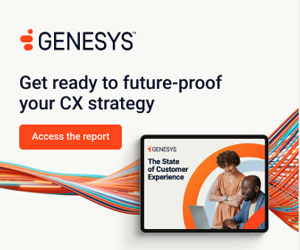Throughout the years, customer service operations, with the abundance of advanced functionality and multi-channel communications, have become more powerful.
As a consequence of this, your customer service team is spending more time moving from application to application, re-entering data or copying and pasting data.
The digitization of data and the introduction of multi-channel communications has acted as a powerful force for productivity and advancement in customer service, but it has also created its own set of mundane work roles.
During a typical customer contact, agents are interacting with at least half a dozen applications. The manual processes associated with these can result in inefficiency, boredom and dissatisfaction for workers. It’s also a situation that’s prone to human errors.
Robotic Process Automation (RPA) uses software technology to automatically handle computer-led tasks that are structured, repetitive and routine. These tasks are predominately driven by rules, triggers, or events.
Back office employees will spend a large proportion of their working day on monotonous activities. These include processing subscriptions, orders, expenses, deliveries. All vital to keep the wheels of customer service running, but also routine for employees.
RPA automates these processes. The workforce derived from automation is then precise, accurate and exempt from boredom or employee dissatisfaction.
Thought:
RPA does not act as a replacement for the human workforce within customer service. Plenty of tasks, particularly in customer service, will always require a human connection to go above and beyond in delivering ‘WOW’ moments remembered by customers. But in many cases, a large proportion of the mundane activities can be automated through RPA, leaving the employees to focus instead on high-value processes for the organisation.
Industries Ready for Automation
RPA can help almost every department within an organisation. However, the contact centre and the back office seem to have the most noticeable need for RPA solutions.
Banking/Finance
- New account entry across systems
- VAT reporting
- Mortgage approval – moving data from place to place
- Notification of loans approval;/disapproval
- Processing of credit card orders
- Series of data entry actions, e.g. ticket and database entry log and the filing of claims requests
Insurance
- Pension Auto Enrolment Assistance
- Policy document data transfer from legacy system to new applications/systems
- Sales support – customer data gathering
- Credit Card Rejections – report of rejected card payments and over a period sends letter to the customer before cancelling service.
Energy & Insurance
- New account entry across systems
- Credit Card Rejections – report of rejected card payments and over a period sends letter to the customer before cancelling service.
- Processing new applications
- Billing and debt recovery to meter readings
Realising the Value in RPA
- Reduce workload: Robots are proven to handle tasks 4-5 times faster than humans. They also work 24/7 and do not take holidays or breaks.
- Eliminate errors: Robots are 100% accurate, consistent and compliant with policies. Fewer errors means less time fixing the mistakes and more time spent on value-added activities.
- Quick Return on Investment (ROI): Many improvements from RPA can result in a positive ROI and one that won’t take forever to show up on the bottom line E.g. Operating costs due to RPA will drop quickly.
- Increase Employee Engagement: Beyond the obvious gain in productivity and reduced workload, with RPA, employees are then freed up to focus on unstructured problem-solving rather than the mundane tasks.
Keeping on Top of the Robots
Just as a human workforce needs to be monitored, a digital workforce needs to be managed and monitored too. In order to reap the rewards of RPA, you will need to ensure your robots are performing their tasks correctly and in a timely manner.
Thought:
A successful RPA solution includes a centralised management control room overseeing the automation. Some of the tasks handled by the control room will be task queuing, monitoring on the overall system’s health, and allocation of robotic resources to meet demands.
Supervisors, for example, are able to keep an eye on the processes that robots are working on, and whether the process can be more efficient. The system itself can keep tabs on successes and failures. If there is an issue that needs the attention of a human/supervisor, the system will send up an alert.
In a large organisation, the RPA control room will be a hive of commotion. One of the main advantages of the whole concept is scaling up and down as needs increase. Imagine 20,000 robots simultaneously on the job handling thousands of tasks every day. A reality that is taking place today.
Author: Guest Author
Published On: 12th Jul 2018 - Last modified: 17th Jul 2018
Read more about - Archived Content, Business Systems





























